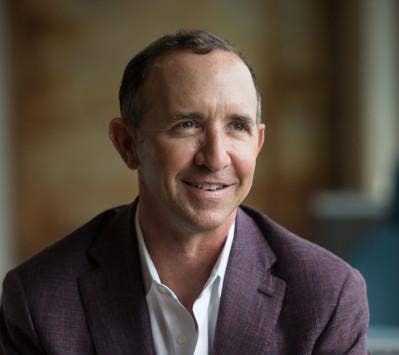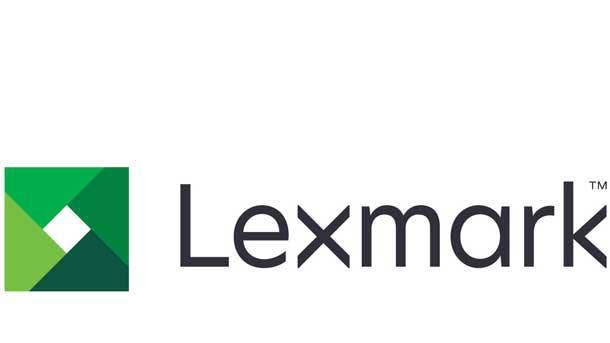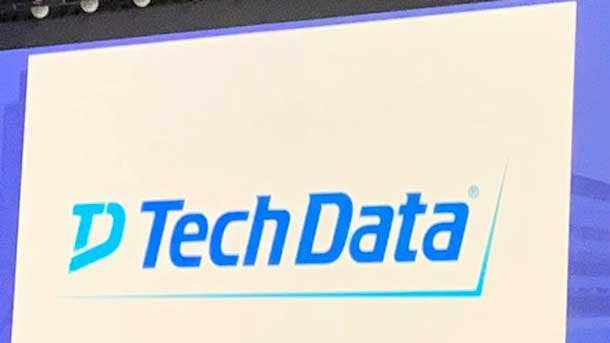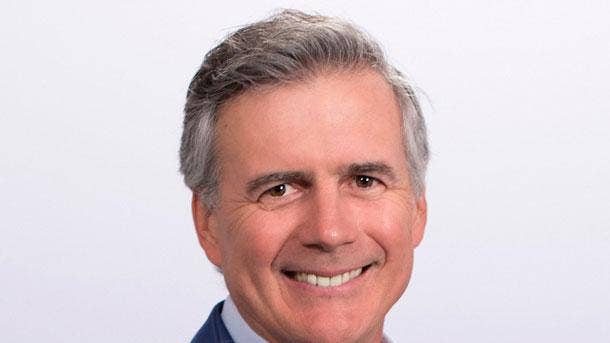Tech Data’s Sammy Kinlaw On Why He Left Lexmark, Opportunity At The Endpoint
‘I knew this was a job I could sink my teeth into. I knew they would give me the autonomy to grow and explore,’ says Sammy Kinlaw, new senior vice president of endpoint solutions for the Americas at Tech Data.

Tech Data’s new senior vice president of endpoint solutions for the Americas, Sammy Kinlaw—the ubiquitous channel chief who has appeared on dozens of main stages—is taking his decades of sales experience at IBM, Lenovo and Lexmark to one of the largest distributors in the country.
“I can very quickly articulate the successes that I had with distribution, where I had return on the capital that I invested and where I did not get a good return,” Kinlaw told CRN. “I mean, it’s not always perfect. It’s varied. And that’s where I think I can help Tech Data.”
Kinlaw talked with CRN about his time with three major manufacturers and how his career seems to have led to this moment. Kinlaw has been named one of CRN’s Top 100 Executives Channel Sales Leaders for the past five years. He arrives at Tech Data from Lexmark, where he spent two and half years as vice president of channel and OEM sales. Prior to joining Lexmark, Kinlaw spent 13 years at Lenovo, departing there as vice president, North America channel and U.S. SMB.

Can you talk a bit about your time at Lexmark?
It‘s been a fantastic experience—from having the ability to run, develop and build a worldwide channel that has consistencies, that has worldwide strategies, priorities, incentives, that frankly can move from one country to the other.
That‘s been nothing short of a blessing for me. There are not many manufacturing organizations that can say that they’ve got a consistent worldwide channel because that’s really tough, and Lexmark gave me that.
I‘ve talked about it many times over the past almost three years. The ability to understand how to motivate a channel that’s declining because print, it has been in decline, and frankly we’ve been able to turn that around at Lexmark.
It‘s been a great thing to understand the complexities of exchange rates and laws that are tailored to Europe versus tailored to the Americas. I’m walking out of that role as a much broader and deeper executive. Just building on to what I had gained from running a big channel at Lenovo.
You ran the channel at both Lenovo and Lexmark. Both are big, international brands with good Fortune 500 adoption, but can you tell me a little about how those two experiences were different?
It’s not as if Lexmark didn’t have a channel. They did. But they weren‘t focused on the SMB, midmarket, open market, which were channel-led, channel-closed. That was the difference in coming to Lexmark because they wanted to build that out and they gave me the ability to do that, and we’ve done a fantastic job. That business for Lexmark is up double digits over the past two years.

So what made you think about a move?
Things were going great at Lexmark. Tech Data asked me to consider this role. When I thought about it, I’ve said on main stage, whether I’ve been at a VAR event or another distributor event, you know my career at IBM, Lenovo and Lexmark was really based on relationships with distribution.
I did recognize early on that, with distribution, your reach and what you can build could be 10X compared to if you tried to do it on your own. Whether it’s from a VAR community, an e-tail community, retail community, any manufacturer is going to struggle to maintain all those individual, small relationships. A distributor can do the heavy lifting on all of those.
I certainly was able to leverage that at Lenovo, where the primary relationships, financial relationships work through distribution. VARs would buy through the distributors. Then through Lexmark, I expanded that even further by utilizing the reach of the distributor to introduce us to accounts where we didn’t have any presence.
When [Tech Data President of the Americas] John [O’Shea] and [CEO] Rich [Hume] talked to me, I knew this was a job I could sink my teeth into. I knew they would give me the autonomy to grow and explore.
So Tech Data, newly acquired from Apollo Global Management, it’s clear they want to expand and they have the investment to do that. My goal is to not walk in as a bull in a china shop, but certainly listen, take it all in, and then use the experiences I have of running three very large manufacturers to find what are the tweaks? What are the changes? What are the updates? How do we want to message? How do we want to position ourselves? All of that is going to be my focus for day one, week one, month one.

As you said, your previous role has been with three manufacturers, and you’ve always been agnostic when talking about distributors. Why Tech Data?
I would stand on any stage and say all of my experiences with all of the distributors in North America have been overwhelmingly positive. I think all of them have an extremely strong executive community.
I certainly know, from representing three big manufacturers, who had what uniqueness. So I can take that into the walls of Tech Data. I’ve got live experience. I’m walking in from leading a worldwide manufacturer. I can say, ‘Here are the things that I liked when I worked with Tech Data. And here are the things that I suggest we consider. Here might be other ideas we have to drive new business.’
I certainly don’t have all the answers, but I am walking in with an arsenal of knowledge. … This is going to be me walking in the door and people saying, ‘What did you learn over the last 10 years or 15 years of being the representative for a big device manufacturer?’ I mean it‘s just going to be cool.

Endpoint devices have had a big year during the pandemic. What are the opportunities in this market?
Endpoint has exploded because people are having to work in different ways and in different environments. They have to have current products.
For example, I met with IT from Tech Data. A year ago, I wouldn’t have had the same conversations with IT because they wouldn’t have been outfitting me for a remote home office. We’re talking about a mouse, keyboard, peripherals, printer, PC choice. These are the things that you need to make your office manageable and workable. That’s a lot of spend. And it’s not just happening with me, it’s happening times a million, and companies are still not outfitted.
And that’s just where it begins. Having a working knowledge of P&Ls within the companies that I’ve been to before, everyone has less Capex and everyone has less Opex. But that doesn’t mean their companies are not going to want them to grow and make profit and extend their reach, or go deeper in their current customers.
So knowing that the CFOs of thousands of companies are going to be constricting and pulling back all of that available money, they’re going to have to do things differently. They’re going to have to outsource their employees from permanent to temp, which Tech Data can help with. They’re going to have to shut off their marketing spend, which Tech Data can help with. They’re going to reduce the number of employees, but they’re still going to need to reach customers, which Tech Data can also help with.
So those are just all the things that are front of mind to me as I walk in the door. Knowing what a VAR needs. … Knowing that the path to market is changing.

Can you talk a little about how that path to market is changing and what that means for distribution?
We already know Amazon‘s been growing in big ways. I had a big Amazon business at Lexmark. How does a company like Tech Data support a VAR knowing that the path to market is certainly changing for some devices? How does a VAR compete with an e-tailer in a post-pandemic environment?
Those are all the things that are swirling around. I already have some initial ideas, but I need to listen first.

You worked for Rich Hume (pictured) at IBM and now you are working for him again. That seems like quite an endorsement, if you are coming back to him all these years later?
Rich was the president of the North American IT group at IBM. At the time, I was a business unit executive for IBM and I had responsibilities for 11 states. So I lived in Dallas. I had four managers and roughly 40 reps, so essentially, I was a second line manager for IBM running the PC and server business.
You always pick folks that you want to model aspects of their career after. Rich was like that for me. My favorite characteristic of an executive is one who can maintain composure in the eye of a crisis.
If you’re in a storm, you want a captain at the helm of the ship who is confident, cool and collected, who understands how to chart a path to smoother waters, that’s how I describe Rich. He’s a gentleman, and his business acumen is off the charts. But he’s got some fun-factor to him, so for me he passes the beer test. I like having a drink with Rich. There are many good qualities about him.